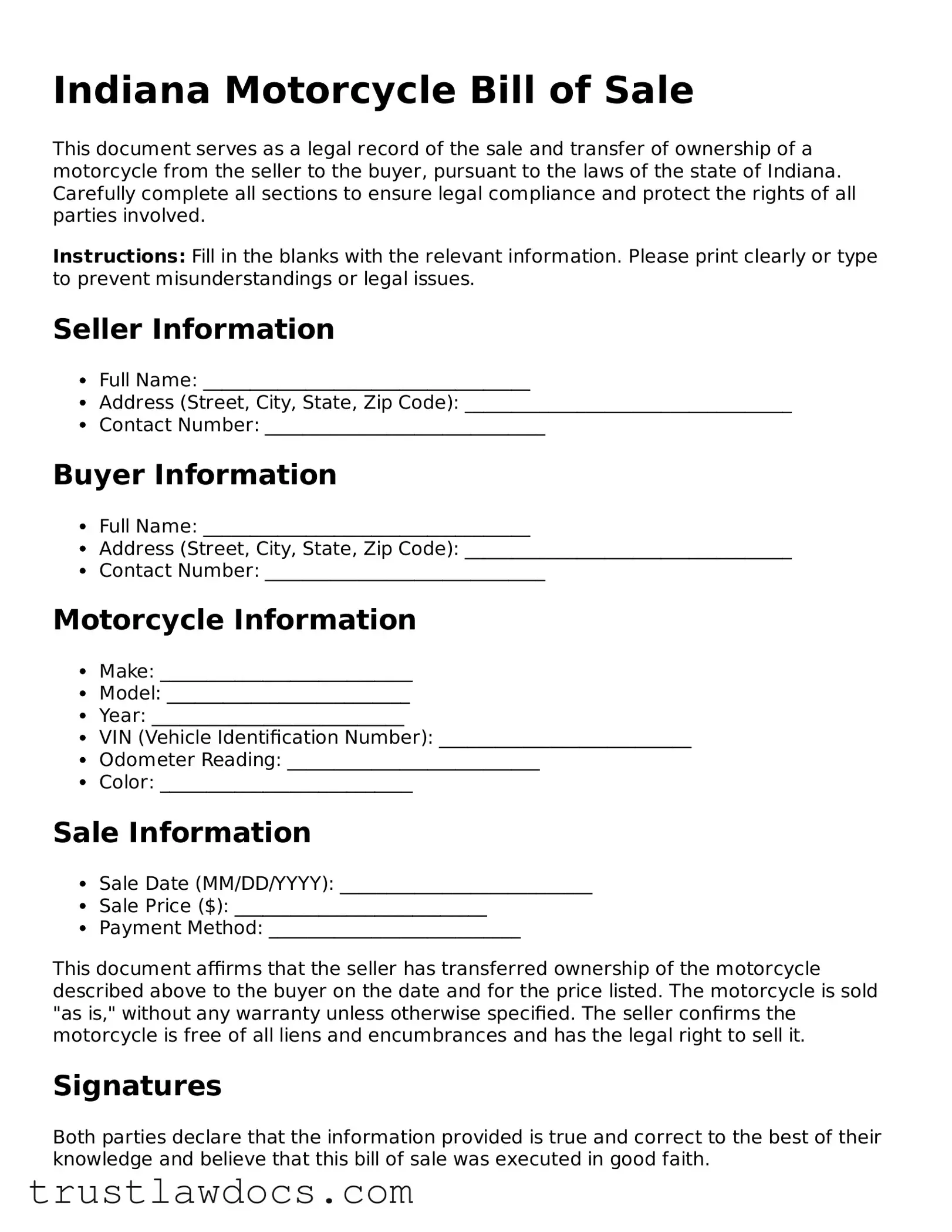The Vehicle Bill of Sale is quite similar to the Indiana Motorcycle Bill of Sale, primarily serving as a documented agreement that a sale and purchase transaction of a vehicle has occurred. This document specifies the details of the transaction, including information about the buyer, seller, and the vehicle itself, such as make, model, year, and VIN (Vehicle Identification Number). It is an essential piece of documentation that solidifies ownership transfer, similar to how the motorcycle bill of sale confirms the change of ownership of a motorcycle.
A Boat Bill of Sale shares a notable resemblance with the Indiana Motorcycle Bill of Sale. This document functions as proof that a boat has been legally sold and purchased. It contains particulars about the transaction, such as the identities of the seller and buyer, alongside details about the boat like its type, model, year of manufacture, and hull identification number. It's a crucial document for officially recording a change in ownership, akin to the motorcycle bill of sale for motorcycles.
The General Bill of Sale is another document that resembles the Indiana Motorcycle Bill of Sale. It is used for transactions involving the sale of personal property items other than vehicles or boats, such as furniture, electronics, or equipment. This document details the transaction between the buyer and seller, describing the item sold, the sale price, and the date of the sale. Like the motorcycle bill of sale, it serves to officially document the transfer of ownership of a personal property item.
The Firearm Bill of Sale is closely related to the Indiana Motorcycle Bill of Sale but is specifically for transactions involving firearms. This document includes detailed information about both the buyer and the seller, along with specifics about the firearm being sold, such as make, model, caliber, and serial number. It plays a critical role in documenting the legal transfer of ownership of a firearm, paralleling the purpose of the motorcycle bill of sale in motorcycle transactions.
A Horse Bill of Sale bears a resemblance to the Indiana Motorcycle Bill of Sale, though it pertains to the sale and purchase of a horse. It outlines critical details of the transaction, including information about the buyer, seller, and the horse, like its breed, age, and registration details. This document is essential for formally documenting the change in ownership of a horse, providing a record analogous to the motorcycle bill of sale for equine transactions.
The Aircraft Bill of Sale is analogous to the Indiana Motorcycle Bill of Sale, albeit for aircraft transactions. It records details of the sale, covering the identities of the buyer and seller, and comprehensive details about the aircraft, including make, model, serial number, and FAA registration number. Like the motorcycle bill of sale, it is a vital document for the legal transfer of ownership of an aircraft.
Finally, the Business Bill of Sale is akin to the Indiana Motorcycle Bill of Sale but focuses on transactions involving the sale of a business. It contains details about the transaction, including information about the buyer and seller, and specifics about the business being sold. This document ensures that there is a formal record of the business transaction, similar to how the motorcycle bill of sale documents the sale of a motorcycle.
